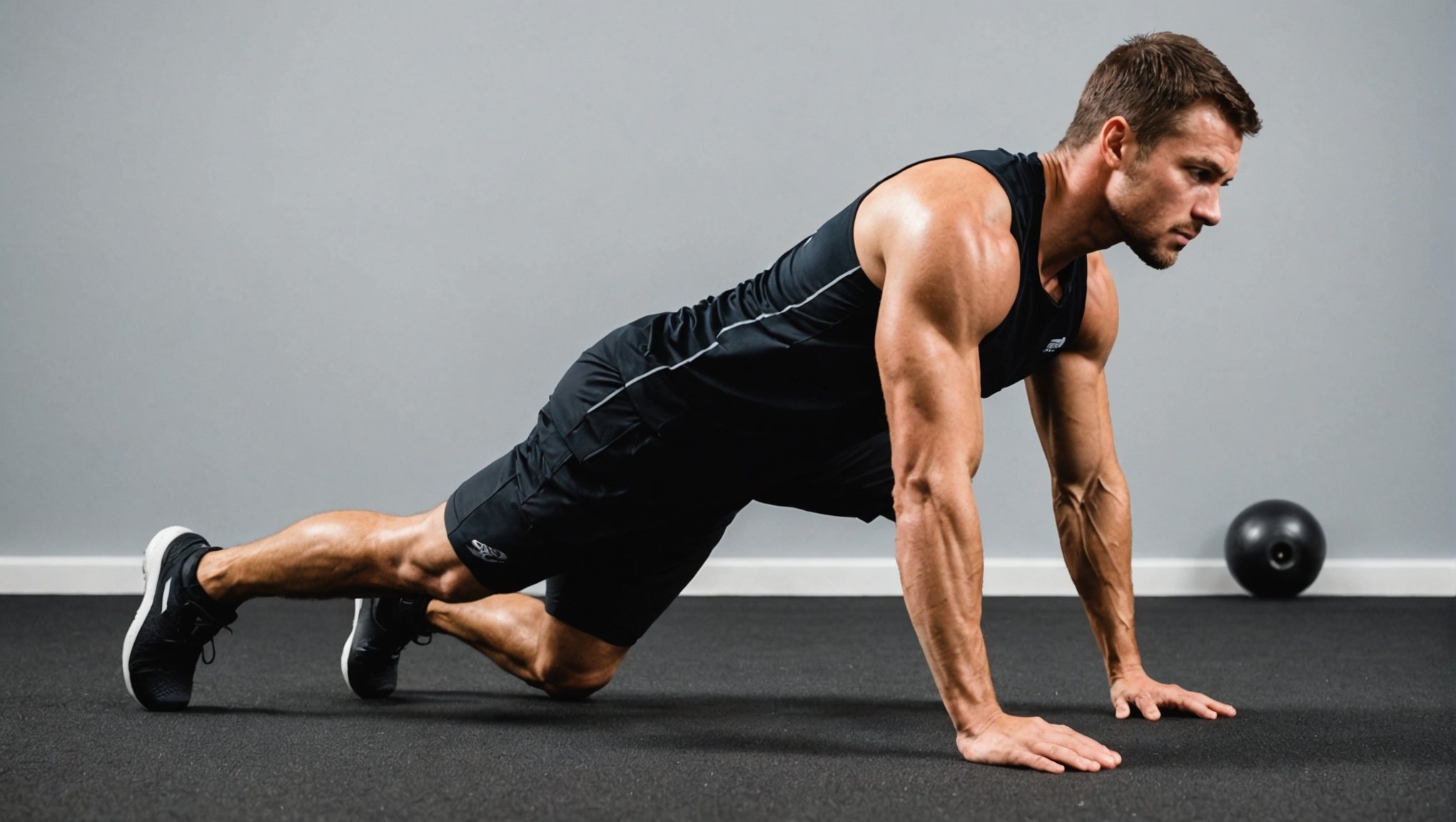Muscle imbalances can occur in any part of the body and often do so without us even realizing. One common type of imbalance occurs between the hamstrings and quadriceps, the large muscle groups in the legs. These imbalances can cause a range of issues, from reduced performance in sports and exercise to increased risk of injury and pain. Let’s delve into the comprehensive steps to correct these imbalances and regain the strength ratio between these crucial leg muscles.
Understanding the Role of Hamstrings and Quadriceps in Leg Movement
Before we delve into rectifying the imbalance, let’s first understand the crucial roles these muscles play in our body. The quadriceps and hamstrings are major muscles that have key roles in leg movement, particularly in running, jumping, and kicking.
This might interest you : What are the biomechanical benefits of unilateral training for leg strength?
The quadriceps are found on the front of your thigh and they work to straighten the leg from the bent position. They are also involved in the movement of the hip, allowing you to walk, run, or jump. On the other hand, the hamstrings, located at the back of your thigh, bend the knee and extend the hip, working in tandem with the quadriceps. The proper functioning of these muscles is vital to the mobility and strength of your lower body.
However, when one set of these muscles becomes stronger or weaker than the other, it can create an imbalance. This imbalance can lead to improper body mechanics, increased risk of injury, and compromised performance.
Topic to read : How does cognitive distraction affect muscle activation during complex lifts?
Identifying Imbalances in Hamstring and Quadriceps Strength
The first step in addressing any imbalance is to identify its existence. In the case of quadriceps and hamstring strength, this can be done through a variety of tests and observations. One common method is the hamstring-to-quadriceps ratio, often referred to as the H:Q ratio.
This ratio measures the maximal isometric strength of the muscles, where the strength of the quadriceps (Q) is compared to the hamstring (H). In a well-balanced leg, the H:Q ratio should ideally be around 0.6, meaning the hamstring strength should be about 60% of the quadriceps strength. A significant deviation from this ratio suggests an imbalance.
Signs of an imbalance may also include recurrent hamstring strains, ongoing knee pain, lower back pain, or a difference in strength or size between the left and right leg muscles.
Correcting Imbalances through Strength Training
Once an imbalance has been identified, targeted strength training exercises can help to correct it. This involves strengthening the weaker muscle group and, if necessary, reducing the strength of the overdeveloped group.
For hamstrings, exercises such as hamstring curls, deadlifts, and glute bridges can be valuable. These exercises target the hamstrings directly, helping to increase their strength and flexibility.
For quadriceps, exercises like squats, lunges, and leg presses are beneficial. These exercises focus on the quadriceps, helping to enhance strength and stability.
It’s important to note that while strengthening the weaker group, you should maintain the strength and flexibility of the stronger group. This will help to prevent further imbalances from developing.
Incorporating Stretching and Mobility Exercises
While strength training is crucial, it’s not the only component in addressing muscle imbalances. Incorporating stretching and mobility exercises into your routine can also help improve the balance between your hamstring and quadriceps.
For the hamstrings, try stretching exercises like seated hamstring stretches, standing hamstring stretches, and towel hamstring stretches. These exercises help to increase flexibility and range of motion in the hamstrings, which can in turn help to correct imbalances.
For the quadriceps, exercises like standing quad stretches, lying quad stretches, and lunge quad stretches can be effective. These exercises target the quadriceps specifically, helping to increase flexibility and reduce tightness.
Mobility exercises also play a crucial role in maintaining and restoring the balance between hamstring and quadriceps. Hip mobility exercises like hip circles, hip extensions, and hip flexor stretches can help to improve the overall function of the lower body and reduce the risk of further imbalances.
Seeking Professional Guidance
Correcting imbalances in hamstring and quadriceps strength is not an overnight process. It requires consistent effort, patience, and most importantly, correct exercise techniques. This is where professional guidance can be invaluable.
Working with a physical therapist or a personal trainer can provide you with a customized exercise program that suits your specific needs. They can monitor your progress, tweak your program as needed, and teach you the proper form and technique to avoid injury.
Professional guidance is especially important if your imbalance is causing pain or if you have a history of knee or hamstring injuries. These professionals can provide you with safe and effective exercises to correct your imbalance, reduce pain, and improve your overall leg strength and performance.
Balance in Athletic Performance and Injury Prevention
In athletic activities, a proper balance in hamstring quadriceps strength ratio is particularly vital. Sports like soccer, where running, kicking, and sudden changes in direction are frequent, require a balanced strength in these muscle groups. Imbalanced muscle groups can impede performance and increase the injury risk.
In sports like soccer, the knee joint undergoes repeated cycles of knee extension and knee flexion. The quadriceps are primarily responsible for knee extension while hamstrings for knee flexion. If the quadriceps overpower the hamstrings, it can lead to quad dominance, a common muscle imbalance in soccer players. This imbalance can lead to increased stress on the knee joint and a higher risk of hamstring strains and anterior cruciate ligament (ACL) injuries.
Research indicates that soccer players with an increased quadriceps peak torque compared to hamstring peak torque are more likely to sustain an ACL injury. An optimal balance in hamstring quadriceps strength helps in absorbing and distributing the impact forces during these activities, hence reducing injury risk.
Resistance training exercises can help in enhancing the strength ratio, but they should be done under supervision to ensure correct technique and form. For instance, single-leg exercises can aid in correcting imbalances by isolating and strengthening the weaker leg.
Conclusion: A Path to Balanced Strength and Improved Performance
Correcting imbalances in quadriceps and hamstrings is a multifaceted process. It requires not just strength training, but also stretching, mobility exercises, and professional guidance. The goal is to achieve a balance where both muscle groups can perform their functions efficiently without causing undue stress to the knee joint.
It is not about making both muscle groups equal in strength, but rather about reaching an optimal strength ratio that suits your individual needs and activities. The range of motion and the starting position of each exercise are as significant as the exercise itself. They ensure that the targeted muscle is being engaged properly.
Remember, muscle imbalances did not develop overnight and likewise, they won’t be corrected instantly. It is a progressive journey that requires consistency, patience, and commitment. But the benefits are well worth the effort. By correcting your muscle imbalance, you can enhance your athletic performance, reduce your risk of injury, and improve the overall health and functionality of your legs.
In conclusion, understanding your body’s unique needs and addressing them with a personalized, balanced approach to strength and flexibility can lead to significant improvements in your overall health and performance. Whether you’re a soccer player aiming to reduce injury risk, or someone looking to overcome knee pain, understanding and addressing these imbalances is a step in the right direction.
Remember, it’s your journey. It may be challenging, but every step brings you closer to a healthier, more balanced you.













